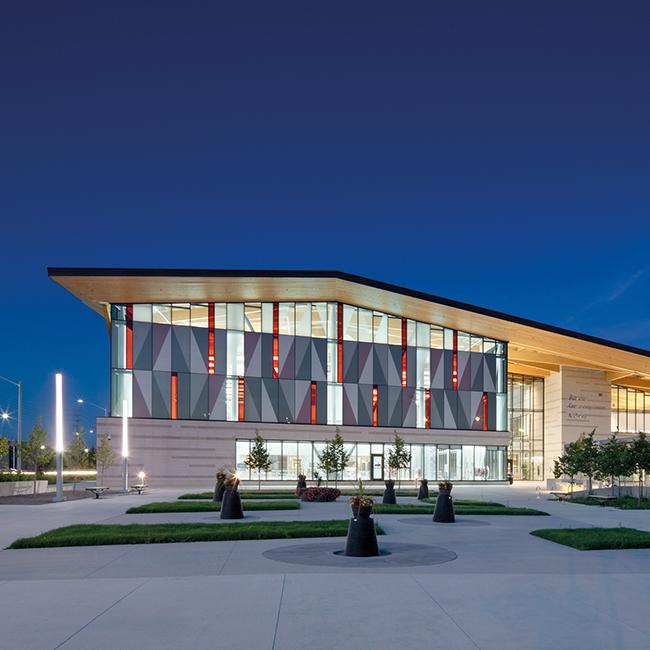Aaniin Community Centre and Library in Markham
The Aaniin Community Centre and Library combines an extensive multi-use program including a district library, aquatics centre, fitness area, multi-use rooms, double gym, and performance space in addition to various change room, food concession and support spaces. The central goal of the concept by Perkins + Will is to explore a framework that multiplies (or overlaps) the connections that exist between programs, people, and environments. This creates a stronger sense of community and place and greater interdependence with the surrounding natural systems.
Located in a suburban landscape, where multiple families often share single-family houses, the community centre is appreciated as a second home for a diversity of people. Conceived as a threshold, the building participates directly with the dynamic new public realm. An array of pathways inscribe across the site, interweaving the community centre and park into its larger context. The internal streetscape offers continuity between interior and exterior spaces and a strong pedestrian connection across the site.

Photos: Tom Arban
